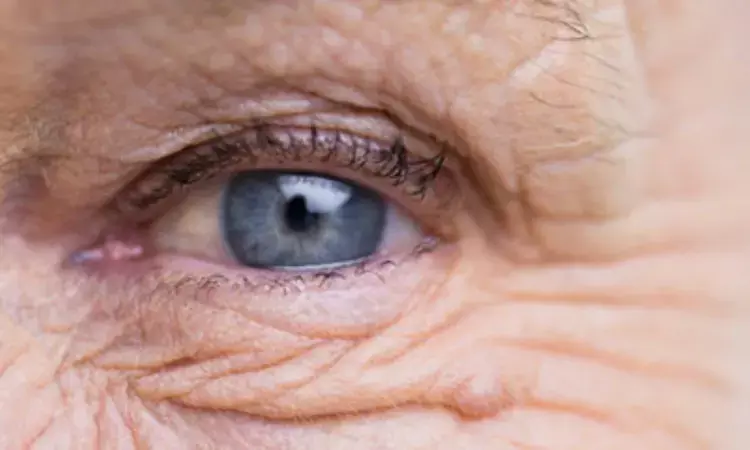- Home
- Medical news & Guidelines
- Anesthesiology
- Cardiology and CTVS
- Critical Care
- Dentistry
- Dermatology
- Diabetes and Endocrinology
- ENT
- Gastroenterology
- Medicine
- Nephrology
- Neurology
- Obstretics-Gynaecology
- Oncology
- Ophthalmology
- Orthopaedics
- Pediatrics-Neonatology
- Psychiatry
- Pulmonology
- Radiology
- Surgery
- Urology
- Laboratory Medicine
- Diet
- Nursing
- Paramedical
- Physiotherapy
- Health news
- Fact Check
- Bone Health Fact Check
- Brain Health Fact Check
- Cancer Related Fact Check
- Child Care Fact Check
- Dental and oral health fact check
- Diabetes and metabolic health fact check
- Diet and Nutrition Fact Check
- Eye and ENT Care Fact Check
- Fitness fact check
- Gut health fact check
- Heart health fact check
- Kidney health fact check
- Medical education fact check
- Men's health fact check
- Respiratory fact check
- Skin and hair care fact check
- Vaccine and Immunization fact check
- Women's health fact check
- AYUSH
- State News
- Andaman and Nicobar Islands
- Andhra Pradesh
- Arunachal Pradesh
- Assam
- Bihar
- Chandigarh
- Chattisgarh
- Dadra and Nagar Haveli
- Daman and Diu
- Delhi
- Goa
- Gujarat
- Haryana
- Himachal Pradesh
- Jammu & Kashmir
- Jharkhand
- Karnataka
- Kerala
- Ladakh
- Lakshadweep
- Madhya Pradesh
- Maharashtra
- Manipur
- Meghalaya
- Mizoram
- Nagaland
- Odisha
- Puducherry
- Punjab
- Rajasthan
- Sikkim
- Tamil Nadu
- Telangana
- Tripura
- Uttar Pradesh
- Uttrakhand
- West Bengal
- Medical Education
- Industry
Weight-Adjusted Waist Index Identified as Strong Predictor of AMD Risk, reveals research

Researchers have established in a new study that the weight-adjusted waist index is a much better predictor of age-related macular degeneration (AMD) risk than conventional measures of obesity like body mass index (BMI) and waist circumference (WC). In a study from Fujian, China, researchers found that there was a non-linear positive association between the index and prevalence of AMD. Results indicate that those with a greater weight-adjusted waist index have significantly higher odds of developing AMD, highlighting the need for early intervention and screening. The study was conducted by Wu Y. and colleagues published in the Frontiers in Medicine journal.
The research utilized NHANES data from 2005 to 2008, with 20,497 participants. After excluding participants under 40 years old, those with missing information on WC, weight, or other variables of interest, the analysis was finally performed on 5,132 participants. The cohort was close to evenly split by gender, with 50.16% female and 49.84% male. Retinal photography was done in all participants, and AMD was diagnosed according to standard fundus examination criteria.
Weight-Adjusted Waist Index Calculation and Tertile Categorization
Weight-adjusted waist index was calculated by dividing WC by the square root of weight in kilograms. Participants were categorized into three tertiles:
• Tertile 1: 8.59 - 10.85
• Tertile 2: 10.85 - 11.52
• Tertile 3: 11.52 - 15.70
• Participants in the top tertile had 1.9 times increased risk for AMD versus those in the lowest tertile (Odds Ratio [OR] = 2.90, 95% Confidence Interval [CI]: 2.18-3.86; p <.0001).
• Increased weight-adjusted waist index was also associated with raised BMI, WC, weight, diabetes, and hypertension.
• The analysis found a critical threshold effect at an index value of 12.11. Below this threshold, the risk of AMD increased significantly (OR = 1.50, 95% CI: 1.04-2.16; p =.0300).
• Beyond this threshold, however, the risk did not increase (OR = 0.75, 95% CI: 0.39-1.45; p =.3943).
• Furthermore, with every unit rise in the index, the risk of developing AMD rose by 76%.
To determine the predictive value of the weight-adjusted waist index, the researchers conducted receiver operating characteristic (ROC) curve analysis and compared its performance with BMI, WC, and weight. The area under the curve (AUC) values were as follows:
• Weight-adjusted waist index: 0.625
• Weight: 0.560
• BMI: 0.530
• Waist circumference: 0.508
The study authors concluded that the weight-adjusted waist index is a better predictor of AMD risk than BMI, weight, and waist circumference. Those with higher index values are more likely to develop AMD, with a notable threshold effect at 12.11. These results underscore the importance of employing more accurate obesity measures for AMD risk prediction and support the call for early detection and intervention strategies in high-risk groups.
Reference:
Wu Y, Liu Y, Jiao Z, et al. Association between the weight-adjusted waist index and age-related macular degeneration in US adults aged≥40 years: The NHANES 2005–2008. Frontiers in Medicine. 2025;12. doi:10.3389/fmed.2025.1552978
Dr Riya Dave has completed dentistry from Gujarat University in 2022. She is a dentist and accomplished medical and scientific writer known for her commitment to bridging the gap between clinical expertise and accessible healthcare information. She has been actively involved in writing blogs related to health and wellness.
Dr Kamal Kant Kohli-MBBS, DTCD- a chest specialist with more than 30 years of practice and a flair for writing clinical articles, Dr Kamal Kant Kohli joined Medical Dialogues as a Chief Editor of Medical News. Besides writing articles, as an editor, he proofreads and verifies all the medical content published on Medical Dialogues including those coming from journals, studies,medical conferences,guidelines etc. Email: drkohli@medicaldialogues.in. Contact no. 011-43720751


